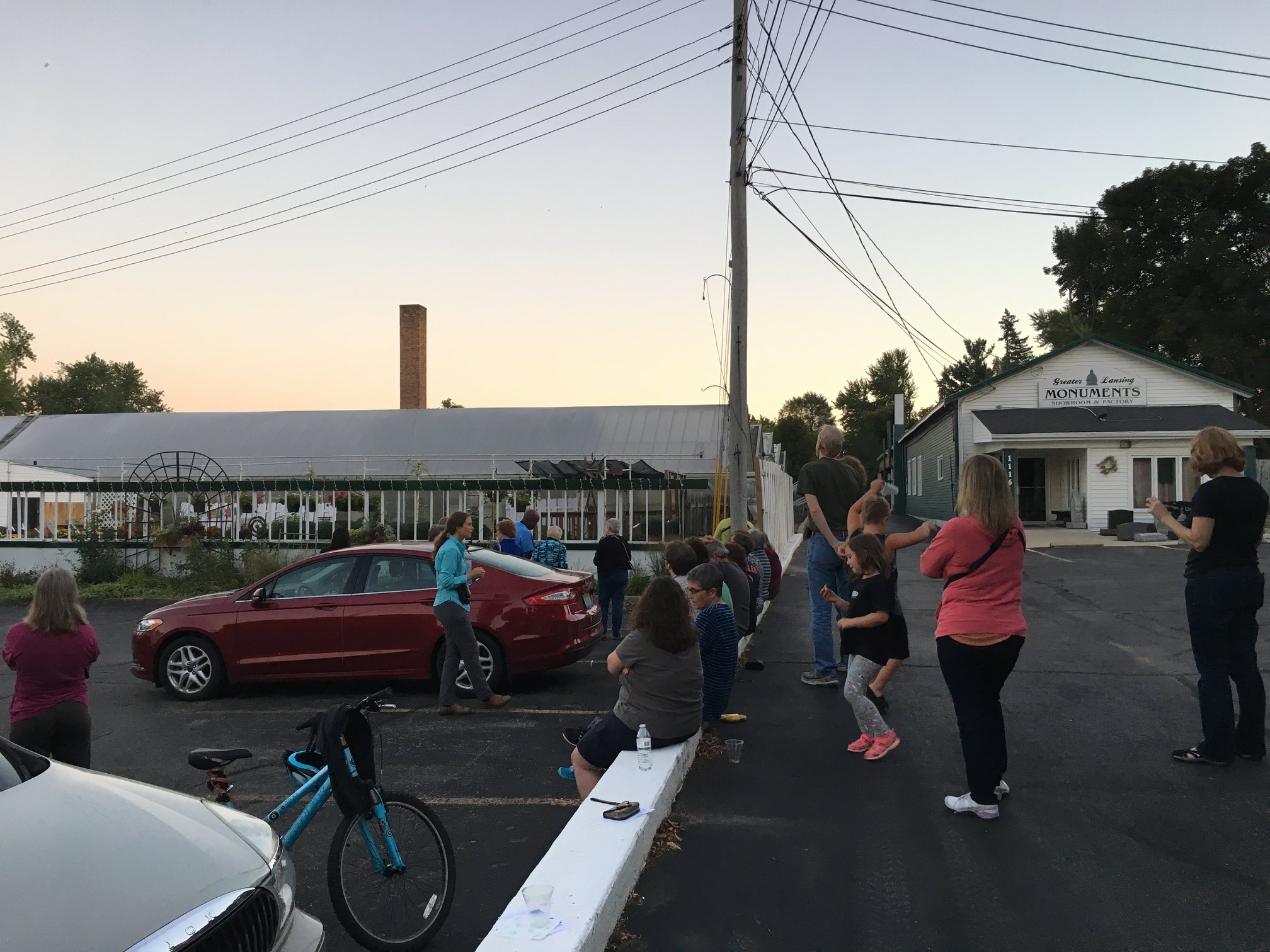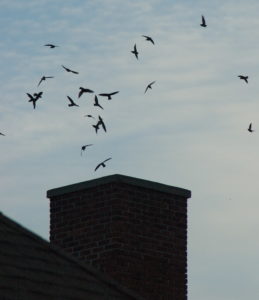
Chimney Swifts coming in to roost at sunset.
Swift Night Out events may require modification due to Covid-19 this year, but that doesn’t mean you have to skip the excitement of seeing hundreds to thousands of Chimney Swifts exhibiting tornado-like aerobatics as they enter a roost for the evening! Birdwatching easily lends itself to social distancing and so can monitoring Chimney Swifts to gain valuable data during fall migration.
Chimney Swift roost surveys aim to gather information about where, when, and how many swifts are roosting across Michigan. By surveying these roosts, we hope to gather information to help support conservation of critical roosting structures in Michigan.
The annual national survey occurs on the second weekends in August and September (Friday – Sunday nights), but you can volunteer to survey at any time throughout August and September (mark your calendar for next year to get an earlier jump on this project!). Surveys begin 30 minutes before sunset and end when the last swift enters the chimney. Surveying for swifts is fun, easy, and suitable for all ages. Potential roost locations are fun to search for — start by looking for large, uncapped chimneys on historical buildings, old factories, schools, churches, courthouses, or libraries. Learn more about conducting the surveys, find datasheets, and enter survey data below.
Official Dates (These dates are the national survey for Chimney Swifts):
2nd weekend in August, Fri. – Sun. evening
2nd weekend in September, Fri. – Sun. evening (September 11–13, 2020)
Casual Dates: Anytime — we are looking to gather a lot of data, so all surveys are valuable!
Location: Known chimney swift roosts, found either by historical records or prior scouting.
Instructions: On at least one night during the survey period, observe the roost starting about 30 minutes before dusk and estimate the number of swifts that enter. Do not count a swift until it enters the roost. At a minimum, record:
- Date of survey
- Location of roost (street address is fine, but GPS coordinates preferred)
- Type of roost (business, residence, school, church, etc.)
- Number of swifts that entered the roost
Links to roost resources:
Chimney swift roost survey instructions
Chimney swift roost survey data sheet (optional)
Enter Chimney swift roost survey data
Submit a potential roost/nest location
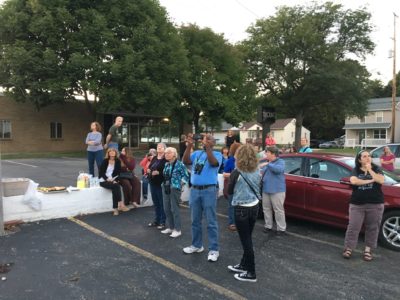
Swift Night Out attendees monitor a chimney in 2018 — a whopping 2,364 Chimney Swifts were counted!
Already Have a Swift Night Out Planned?
Submit it to our community calendar to help get the word out! Please note that all events this year must include language on Covid-19 precautions that are in place for your event such as social distancing and whether masks are required.
You can also tag Michigan Audubon in your social media posts for greater reach on Facebook, Instagram, or Twitter.
Meet the Chimney Swift!
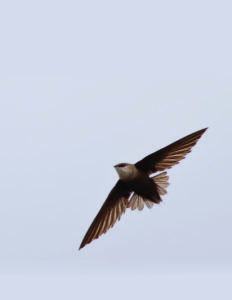
Chimney Swift © Zak Pohlen
Description: 5” long with 12.5” wingspan; “cigar-shaped.” Dark brown-grayish overall.
Behavior: This agile aerial insectivore (or, a bird that eats insects while flying in the air) can be seen or heard in neighborhoods, urban areas, and over parks. They often go unnoticed by the casual observer, but once you hear that Chimney Swift twitter, you may start hearing it more often than you’d think! Chimney Swifts are Neotropical migrants, meaning they travel to North America in the summer to breed and migrate back south to South America to spend the winter. During the breeding season, birds remain in pairs or small family groups, but during migration, they may amass in the thousands — which you may observe during your own Swift Night Out!
Roosting: Chimney Swifts gather in the thousands during spring and fall migration. At dusk, birds will form swirling “tornadoes” that spiral down into large roosting chimneys to take shelter at night. Some of the best roosting chimneys can be found at older churches, schools, and factories. Michigan’s largest roosting site is the Swift Sanctuary of Farmington where up to 50,000 swifts may roost during migration.
Population Status: This relatively common species has experienced steep population declines in recent decades, with a total decline of 72% of the population since the mid-1960s. Much of this is due to loss of nesting and roosting habitat, declining insect populations, use of pesticides, and climate change.
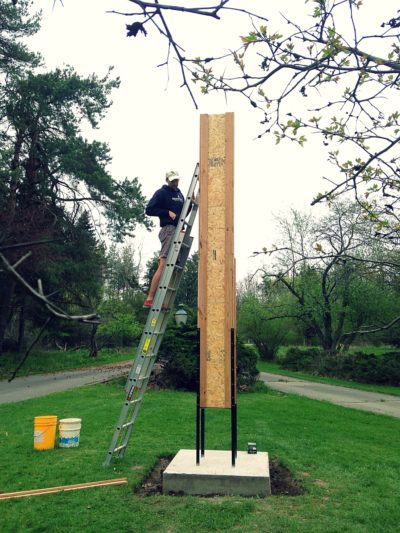
Provide Shelter With a Chimney Swift Tower!
Michigan Audubon’s efforts are focused on outreach, education, on-the-ground conservation, and research to increase awareness for Chimney Swifts and slow or reverse the population declines they have experienced across the state. With partners in the Greater Lansing area, we have erected four Chimney Swift nesting towers at Hartrick Park, Woldumar Nature Center, Kinawa Middle School, and Capital City Bird Sanctuary.
We will be featuring the most recent build at Kinawa Middle School in an upcoming blog post!

